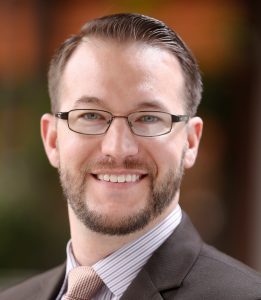At Able City, when it comes to making better cities, our employees and our firm are on the same page. To illustrate this — and offer a peek at our staff and practice — we’re kicking off an employee profile series on the last Thursday of each month.
Our first employee is architect and certified planner Aaron Hanley, who joined Able City last March. A native of Santa Rosa, California, Aaron has been living in Texas since he moved to San Antonio to receive his Bachelor’s and Master’s in Architecture at the University of Texas, San Antonio. Aaron joins Able City as a former planning director with over a decade of experience in designing livable communities.
As of early this year, Aaron moved again, this time to a different house in the Rio Grande Valley, where Aaron heads Able City’s new office in Mission, TX. Among many things, we discussed the difficulty of finding housing that aligned with his values — something as a planner, architect, and public servant, Aaron has been steadily trying to change.
See below for our two-part Q-and-A.

Part 1: Planning and Architecture
Able City (AC): How did you know you wanted to be an architect?
Aaron (A): My dad was a contractor and so from a very young age I knew I wanted to be involved in building things; however, I didn’t want to be out in the weather, and if I could do so from inside a studio, that would be ideal. Media also played a big role. Every movie I watched as a kid had a successful architect in it…
From the age of 12, then, I knew I wanted to become an architect. I stuck with it. I went all the way through my Bachelor’s and then decided to take a year off and start working rather than go into the Master’s — I worked for a firm in San Antonio that does facility programming and space planning and a little bit of master planning, and so I got a little bit of exposure to the high level of planning as opposed to the architectural design and detailing, and so when I went back to my Master’s a year later, I took some electives in planning and fell in love.
AC: Why is planning important to architecture?
A: Even within design, you have to work at different scales. You can get caught up in the details and if you don’t zoom back out, you miss the big picture. In line with Able City’s mission and the critique on trends in the architectural practice, I realized that standalone building and architectural projects were turning their back and ignoring their interaction with their surroundings, the urban fabric. They weren’t connecting to the community, and so I really wanted to be involved in designing the community — how the buildings fit in. And just really see the whole project so that it’s a comprehensive and holistic design process.
AC: How has being a Certified Planner changed how you practice architecture?
A: The practice of architecture is not about knowing everything but you have to know a little bit about everything and you have to know where to find information, how to research, and how to coordinate multiple consultants and different trades and industries. I think that has influenced my planning strategy, in that I have become resourceful in locating data, strategizing the collection of information, engaging stakeholders, and bringing different sets of information together and synthesizing them. However, I think planning has influenced my design process more than architecture has influenced my planning.
AC: Does there need to be a call to action within the architectural profession?
A: Mario said it best when he was explaining that we have to change the mindset of the consumer. There does need to be a public awareness, call-to-action so that the client — the consumer — understands the benefits of doing planning and architecture right and holistically. You don’t want projects that call themselves sustainable — do all the LEED options — but then are on an island in the middle of nowhere so you have all these vehicle trips generated, meaning they’re not walkable or sustainable from an urban planning perspective. You have to look at everything together. We have to do a public awareness campaign to get the consumer to understand that.
AC: Why is the Congress for New Urbanism important?
A: The Congress for New Urbanism opened up a bit more of a holistic view for me of the impacts of not using responsible planning strategies has on society as a whole — the dependence on vehicles, pollution, traffic, congestion. I started to understand the role that suburban sprawl has had in shaping the consumer — the narrative goes that they should want a one-acre lot with a garage in the front and three cars, and they have their yard, and they play in their yard with fences, and they don’t talk to the neighbor, and they don’t walk anywhere, ever. However, I think people would be much happier in an environment where they could walk to whatever service they needed: they could walk to the park with their kids, they don’t need the one-acre yard to play when they have a community playground, and they have all the retail and commercial requirements within a quarter-mile walking radius. They would realize that that’s really what would improve their quality of life more, and so we have to make the consumer aware of that. That’s what the Congress of New Urbanism has showed me.
AC: Where is the raising awareness effort happening? I’d like to hear you elaborate more on how to persuade a consumer through architecture or planning.
A: I don’t think it happens overnight and I don’t think you can reach everybody all at once. Once again we’re subject to our clients’ wills — we engage with one community at a time. However, being CNU-Accredited means being an advocate, so passing the test and becoming a CNU-A and member comes with the responsibility of educating anyone you come in contact with, personally or professionally, about the benefits of those methods and strategies. The more advocates you have, the more the message will spread and the more we can get away from these practices that have led to America’s suburban sprawl issue.
AC: How was working in the public sector different from the private sector?
A: As planning director for South Padre Island, I was a city employee, so I worked for the taxpayers. I gained experience implementing form-based codes, and overall the experience gave me a certain perspective on my responsibility to my community. There’s different cohorts and sectors of the community. Not everyone is going to be happy about every decision.
Good planning is finding not only the advocates but also the opposition and working through the process to find a happy medium — at least making sure everyone knows that their voice was heard, even if they were overruled by the majority. Upholding that confidence of the stakeholders and the community. Letting them know that you’re not just bending to the will of the loud or doing whatever makes the most money.
AC: Can you talk about yourself as a consumer? The planning you look for in a neighborhood?
A: In my consumer history I don’t think I’ve had much of an option. I think I’ve only had the typical suburban option. I’ve got young kids that I have to follow good school districts and the good school districts are all in the suburbs, and so I’ve been a victim of all of this as well. I would really enjoy a model like Europe’s — walking to the market every day to get your goods as opposed to going to the Costco and getting three weeks worth of big jars of stuff, and throwing away 50% of it at the end of that time. It’s a different style of living, a different way of life.
AC: Is it feasible that Texas gets there? What are some changes Texas can make to achieve sustainable urbanism?
A: I think it’s going to be incremental change. I do see some positive changes on the horizon. You saw the article about Biden’s highways to boulevards — his emphasis on getting away from the dependence on coal and fossil fuels and moving to sustainable energy. I think sustainability and our finite resources on the planet is going to push us to make our developments more compact and to stop using prime agricultural land and implement more urban farming. Eliminate food islands. Things like that. I think there’s incremental change happening in a lot of different arenas that are all going to stack up and get us there eventually. I do think that all of America will eventually adopt and adapt to this more walkable, responsible development practice.
Part 2: Able City
AC: What attracted you to Able City?
A: I was attracted to Able City because Mario was the only other person that I knew of that was both a licensed Architect and Certified Planner like myself; and for me, pursuing both career paths was important. Able City’s values aligned with mine in that they seemed to really care about both their employees but also the impact their services have on the community. It was also easy talking to the principles and we got along well; truly great people!
AC: Why did Able City open an office in the Rio Grande Valley?
A: I was brought on in response to having this project down here. Able City had an office in San Antonio and Laredo but had this huge development going on in Mission and so they were looking for someone to run their office down here. It worked out perfect, as I had just been subject to a COVID-related layoff.
I came in after the Charrette was already done so the vision for the community had already been set. My first task and role was to review the plan unit development document and the architectural guidelines and start ensuring that the phase 1 development, which we’re working on now, complies with those regulations and the regulations allow both everything the client wants to do as well as supports and enhances the principles of new urbanism.
AC: What is the El Milagro development?
A: It’s a long-term project. When I was brought on, I was told it was going to be a 20-30 year project because there’s 3,000 acres to develop. This first phase is only 176 acres and 330 single-family units and eventually that will be 3,000 units and 3,000 acres. It’s going to take a long time. We’ll be here through other iterations and revision to that vision. We’ll be able to plan future phases, which I’m excited about. We’ll be able to learn from things that happen in phase 1 and implement those in the future.
AC: 20-30 years. That timescale. For someone not from an architectural or planning background, that’s monumental — how does working on a 20-30 timescale change your thinking?
A: There’s a part of it that’s daunting and frustrating — I’ll probably live to see it, but you won’t be immediately gratified which is what we’ve all been taught to do. You won’t see all the fruition of all the labor, at least in its completeness, for a long long time. That part is frustrating. But it is exciting to know that you’re slowly creating something that’s going to be a beacon for the rest of Texas and potentially the rest of the nation. There’s ample opportunity in the future because it’s such a large development to redirect and learn from mistakes and adapt new analysis or new theories to make it even better.

